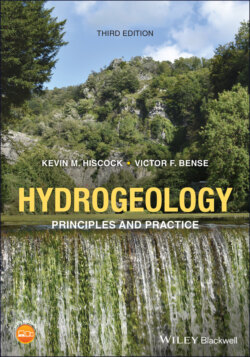Читать книгу Hydrogeology - Kevin M. Hiscock - Страница 34
1.6.2 Global groundwater depletion and sea level rise
ОглавлениеUsing a global hydrological model, Wada et al. (2010) assessed the amount of groundwater depletion, defined as the excess of abstraction over recharge replenishment, and estimated that for sub‐humid and arid areas the rate of total global groundwater depletion has increased from 126 ± 32 km3 a−1 in 1960 to 283 ± 40 km3 a−1 in 2000 (Fig. 1.11). Groundwater depletion in 2000 equalled about 40% of the global annual groundwater abstraction, about 2% of the global annual groundwater recharge and about 1% of the global annual continental runoff, contributing a considerable amount (about 25%) of 0.8 ± 0.1 mm a−1 to current sea level rise.
Using a similar approach in which groundwater depletion was directly calculated using calibrated groundwater models, analytical approaches or volumetric budget analyses for multiple aquifer systems, Konikow (2011) estimated an average global groundwater depletion rate of 145 km3 a−1 during the period 2000–2008, equivalent to 0.4 mm a−1 of sea‐level rise, or 13% of the reported rise of 3.1 mm a−1 during this period.
Using an integrated water resources assessment model to simulate global terrestrial water stocks and flows, Pokhrel et al. (2012) estimated that the sum of unsustainable groundwater use, artificial reservoir water impoundment, climate‐driven changes in terrestrial water storage and the loss of water in closed basins, principally the Aral Sea, has contributed a sea‐level rise of about 0.77 mm a−1 between 1961 and 2003, or about 42% of the observed sea‐level rise. Considering a simulated mean annual unsustainable groundwater use during 1951–2000 of about 359 km3 a−1, Pokhrel et al. (2012) estimated, using the assumption of Wada et al. (2010) that 97% of unsustainable groundwater use ends up in the oceans, a cumulative sea‐level rise due to groundwater over‐abstraction during this period of 48 mm or about 1 mm a−1.
